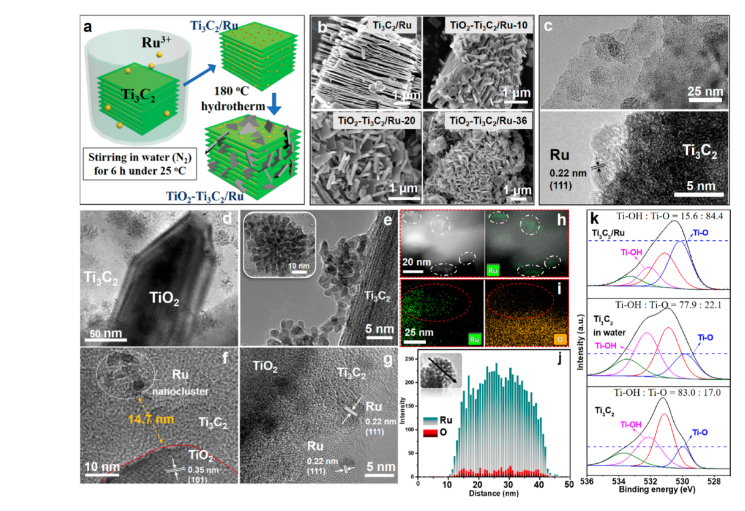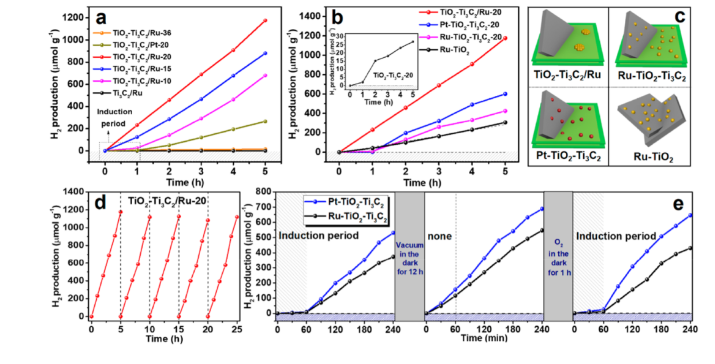
hotline:
17715390137
Tel/Wechat:
18101240246 (Technology)
0512-68565571
Email:mxenes@163.com (Sales Engineer)bkxc.bonnie@gmail.com
Scan the code to follow or search the official account on WeChat:
2D Materials Fronrier After paying attention,
click on the lower right corner to contact us,
Enter enterprise WeChat.
Professional Services Online


South China University of Technology Peng Feng, Peng Xinwen, etc. reported the synthesis of restricted Ti3C2/Ru co-catalysts. The synthesis method directly reduces Ru3+ without adding a reducing agent. The in-situ formed TiO2 nanosheets are modified on the surface of Ti3C2/Ru. , While maintaining a good separation between the semiconductor TiO2 and Ti3C2/Ru co-catalyst, because the catalyst has a lower Fermi energy level, the self-assembled Ti3C2/Ru co-catalyst can receive photo-generated electrons and improve the process of generating H2. The catalyst exhibits high stability. The author used DFT calculations and in-situ DRIFT infrared spectroscopy to test the interface work function changes, and found that the Ti3C2/Ru photocatalysts with separated structures effectively improved the charge transfer efficiency and the photocatalytic H2 generation efficiency. This work provides design guidance experience for the development of semiconductor co-catalysts for solar energy conversion catalysts.

Article source: Catalytic Meter


| Reminder: Beijing Beike New Material Technology Co., Ltd. supplies products only for scientific research, not for humans |
| All rights reserved © 2019 beijing beike new material Technology Co., Ltd 京ICP备16054715-2号 |